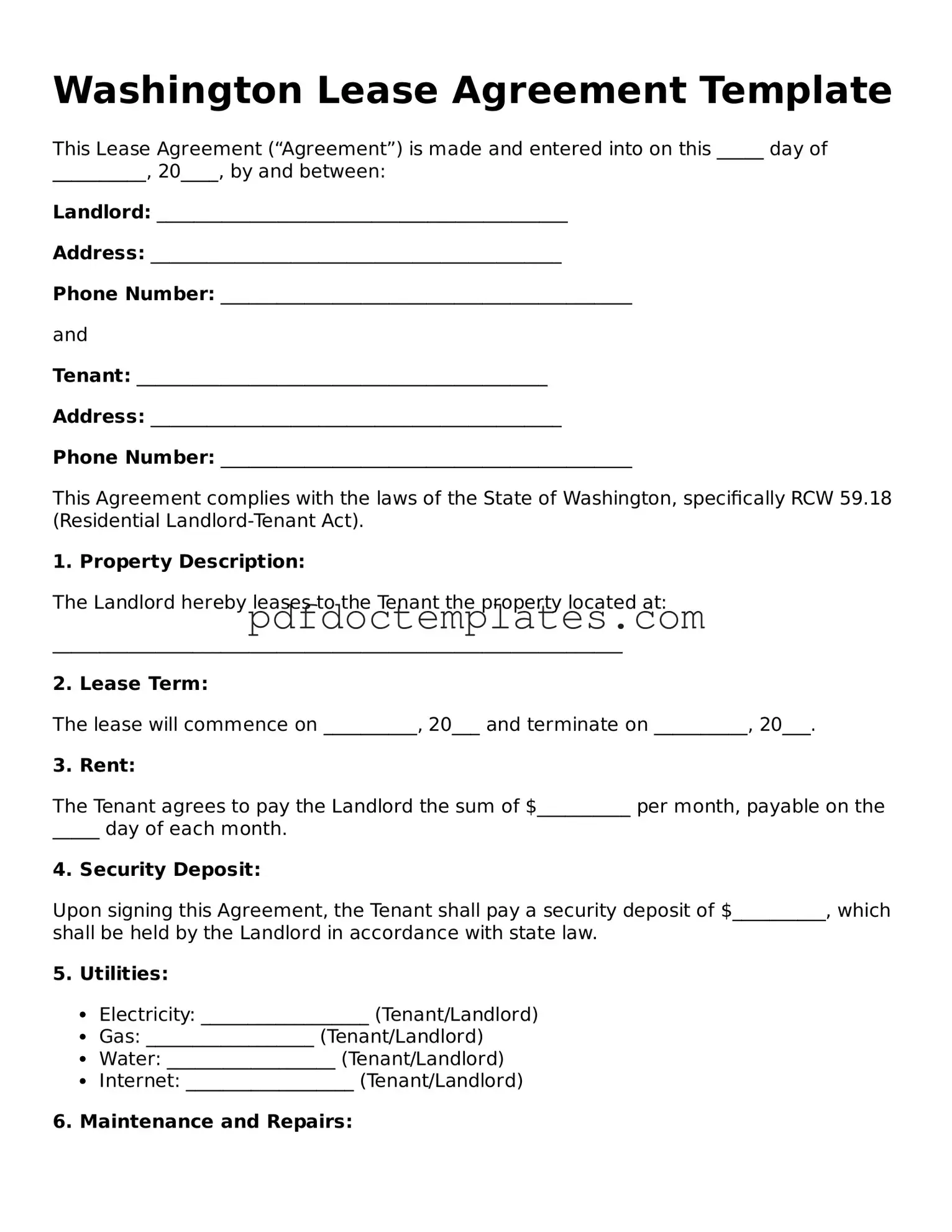Washington Lease Agreement Template
This Lease Agreement (“Agreement”) is made and entered into on this _____ day of __________, 20____, by and between:
Landlord: ____________________________________________
Address: ____________________________________________
Phone Number: ____________________________________________
and
Tenant: ____________________________________________
Address: ____________________________________________
Phone Number: ____________________________________________
This Agreement complies with the laws of the State of Washington, specifically RCW 59.18 (Residential Landlord-Tenant Act).
1. Property Description:
The Landlord hereby leases to the Tenant the property located at:
_____________________________________________________________
2. Lease Term:
The lease will commence on __________, 20___ and terminate on __________, 20___.
3. Rent:
The Tenant agrees to pay the Landlord the sum of $__________ per month, payable on the _____ day of each month.
4. Security Deposit:
Upon signing this Agreement, the Tenant shall pay a security deposit of $__________, which shall be held by the Landlord in accordance with state law.
5. Utilities:
- Electricity: __________________ (Tenant/Landlord)
- Gas: __________________ (Tenant/Landlord)
- Water: __________________ (Tenant/Landlord)
- Internet: __________________ (Tenant/Landlord)
6. Maintenance and Repairs:
The Tenant shall be responsible for maintaining the property in a clean and sanitary condition. The Landlord shall handle all major repairs unless caused by Tenant negligence.
7. Pets:
(Check one)
- [ ] Pets are allowed.
- [ ] Pets are not allowed.
8. Termination:
Either party may terminate this Agreement in accordance with Washington state laws regarding notice periods.
9. Governing Law:
This Agreement shall be governed by the laws of the State of Washington.
IN WITNESS WHEREOF, the parties have executed this Lease Agreement as of the date first above written.
Landlord Signature: _______________________________
Date: _____________
Tenant Signature: _______________________________
Date: _____________
